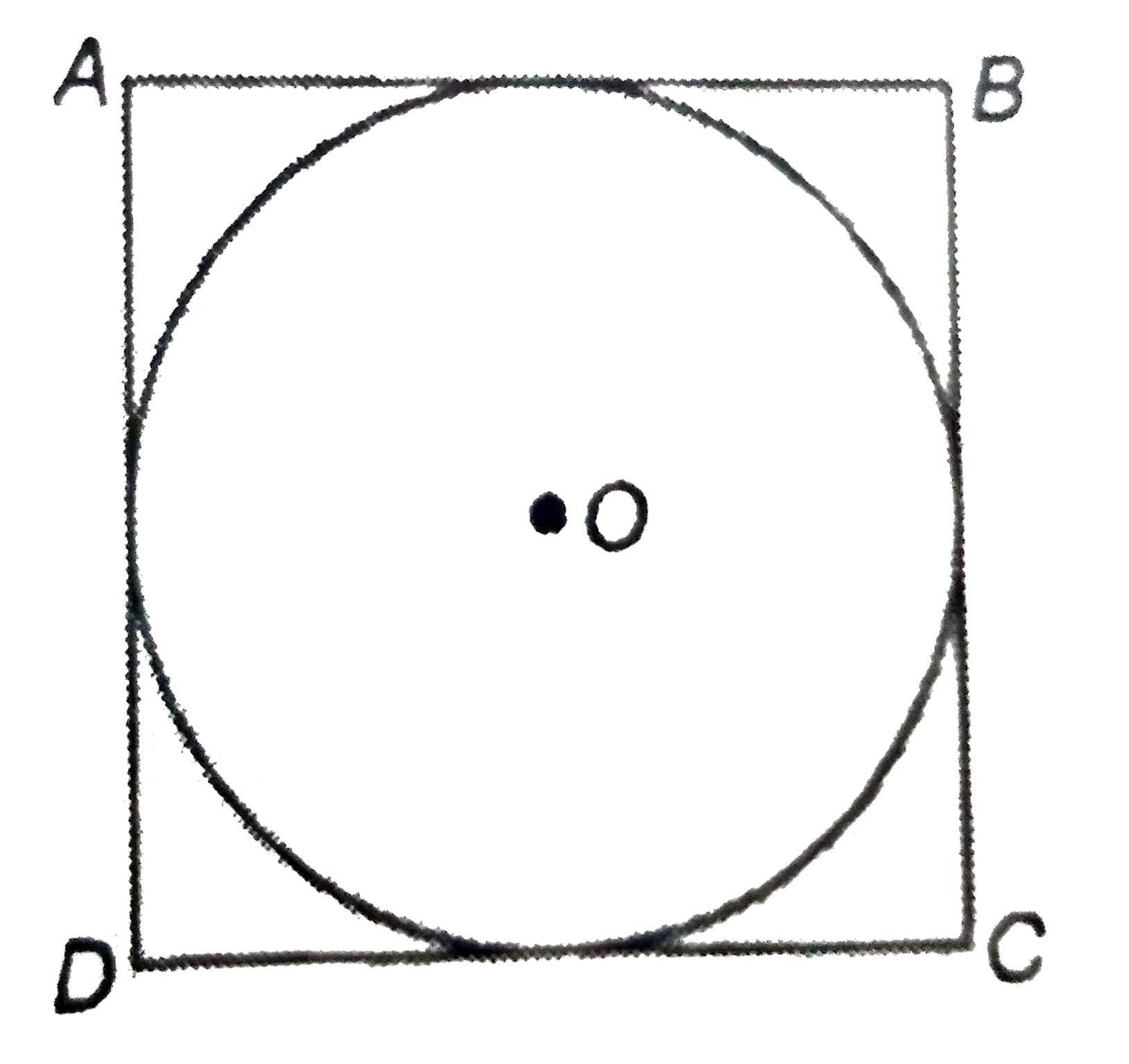The sum of the perimeter of a circle and square is k, where k is some constant. Prove that the sum of their areas is least when the side of square is double the radius of the circle.
To prove that the sum of the areas of a circle and a square is least when the side of the square is double the radius of the circle, we will follow these steps:
Step 1: Define the Variables
Let:
- r = radius of the circle
- a = side of the square
Step 2: Write the Perimeters
The perimeter (circumference) of the circle is given by:
Pcircle=2πr
The perimeter of the square is given by:
Psquare=4a
According to the problem, the sum of the perimeters is a constant k:
2πr+4a=k
Step 3: Express r in Terms of a
Rearranging the equation for r:
2πr=k−4a
r=k−4a2π
Step 4: Write the Areas
The area of the circle is:
Acircle=πr2
The area of the square is:
Asquare=a2
Thus, the total area A is:
A=Acircle+Asquare=πr2+a2
Step 5: Substitute r into the Area Formula
Substituting r from Step 3 into the area formula:
A=π(k−4a2π)2+a2
=π⋅(k−4a)24π2+a2
=(k−4a)24π+a2
Step 6: Differentiate the Area with Respect to a
To find the minimum area, we differentiate A with respect to a:
dAda=14π⋅2(k−4a)(−4)+2a
=−8(k−4a)4π+2a
=−2(k−4a)π+2a
Step 7: Set the Derivative to Zero
Setting the derivative equal to zero for minimization:
−2(k−4a)π+2a=0
2(k−4a)π=2a
k−4aπ=a
k−4a=πa
k=4a+πa
k=a(4+π)
Step 8: Express a in Terms of k
From the above equation, we can express a:
a=k4+π
Step 9: Find r in Terms of a
Substituting a back into the equation for r:
r=k−4(k4+π)2π
=k(1−44+π)2π
=k(π4+π)2π
=k2(4+π)
Step 10: Show that a=2r
Now we need to show that a=2r:
2r=2⋅k2(4+π)=k4+π
Thus, we can see that:
a=2r
Conclusion
We have shown that the sum of the areas is minimized when the side of the square is double the radius of the circle.
Let:
- r = radius of the circle
- a = side of the square
The perimeter (circumference) of the circle is given by:
Pcircle=2πr
The perimeter of the square is given by:
Psquare=4a
According to the problem, the sum of the perimeters is a constant k:
2πr+4a=k
Rearranging the equation for r:
2πr=k−4a
r=k−4a2π
The area of the circle is:
Acircle=πr2
The area of the square is:
Asquare=a2
Thus, the total area A is:
A=Acircle+Asquare=πr2+a2
Substituting r from Step 3 into the area formula:
A=π(k−4a2π)2+a2
=π⋅(k−4a)24π2+a2
=(k−4a)24π+a2
To find the minimum area, we differentiate A with respect to a:
dAda=14π⋅2(k−4a)(−4)+2a
=−8(k−4a)4π+2a
=−2(k−4a)π+2a
Setting the derivative equal to zero for minimization:
−2(k−4a)π+2a=0
2(k−4a)π=2a
k−4aπ=a
k−4a=πa
k=4a+πa
k=a(4+π)
From the above equation, we can express a:
a=k4+π
Substituting a back into the equation for r:
r=k−4(k4+π)2π
=k(1−44+π)2π
=k(π4+π)2π
=k2(4+π)
Now we need to show that a=2r:
2r=2⋅k2(4+π)=k4+π
Thus, we can see that:
a=2r
We have shown that the sum of the areas is minimized when the side of the square is double the radius of the circle.
Similar Questions
The sum of the perimeters of a circle and a square is k , where k is some constant. Prove that the sum of their areas is least when the side of the square is double the radius of the circle.
View SolutionThe sum of the perimeters of a square and a circle is given. Show that the sum of their areas is minimum when the length of a side of the square is equal to the diameter of the circle.
View Solution
Knowledge Check
Find the perimeter and area of a square of side 9 cm .
A=86cm2B=81cm2C=91cm2D=71cm2
A wire of length l is cut into two parts. One part is bent into a circle and the other into a square. Prove that the sum of the areas of the circle and the square is the least, if the radius of the circle is half of the side of the square.
View SolutionProve that the sum of the squares of the sides of a rhombus is equal to the sum of the squares of its diagonals.
View SolutionProve that the sum of the squares of the sides of a rhombus is equal to the sum of the squares of its diagonals.
View SolutionIf a square of side 10 is inscribed in a circle then radius of the circle is
View SolutionThe radius of a circle is 14 cm. Find the radius of the circle whose area is double of the area of the circle.
View Solutionin the adjoining figure ABCD is a square of side 14 cm. Find the radius of the circle

View SolutionIf the perimeter of a circle is equal to that of a square, then the ratio of their areas is
View Solution